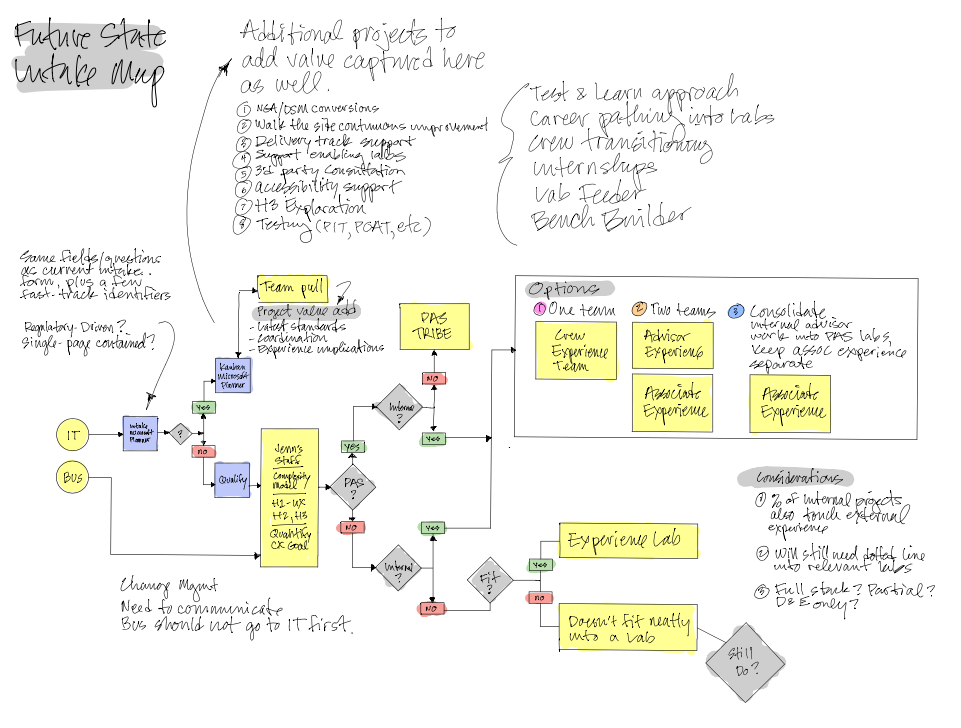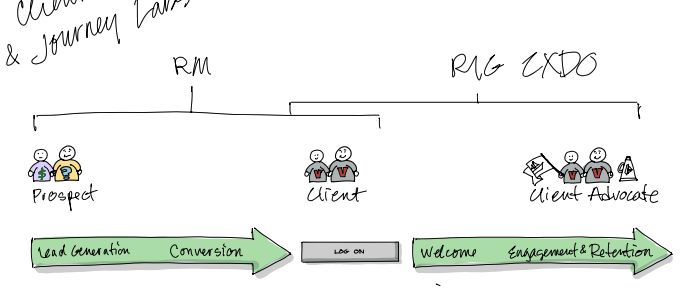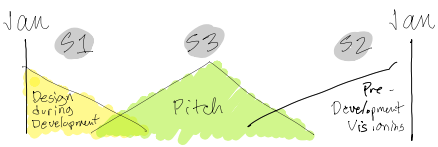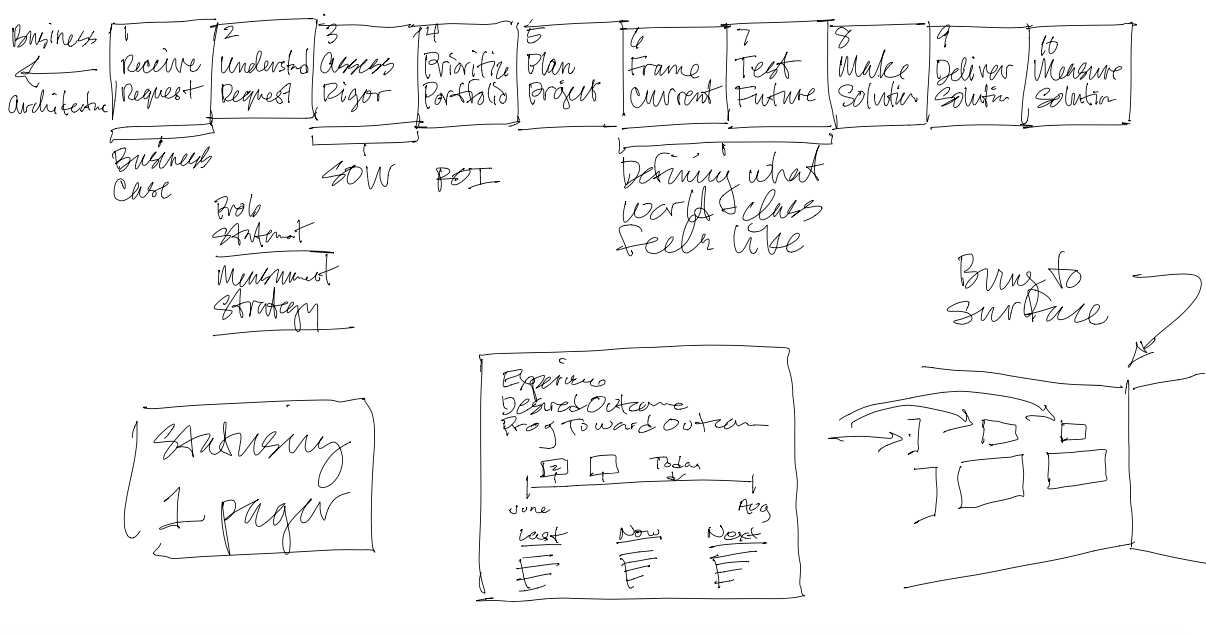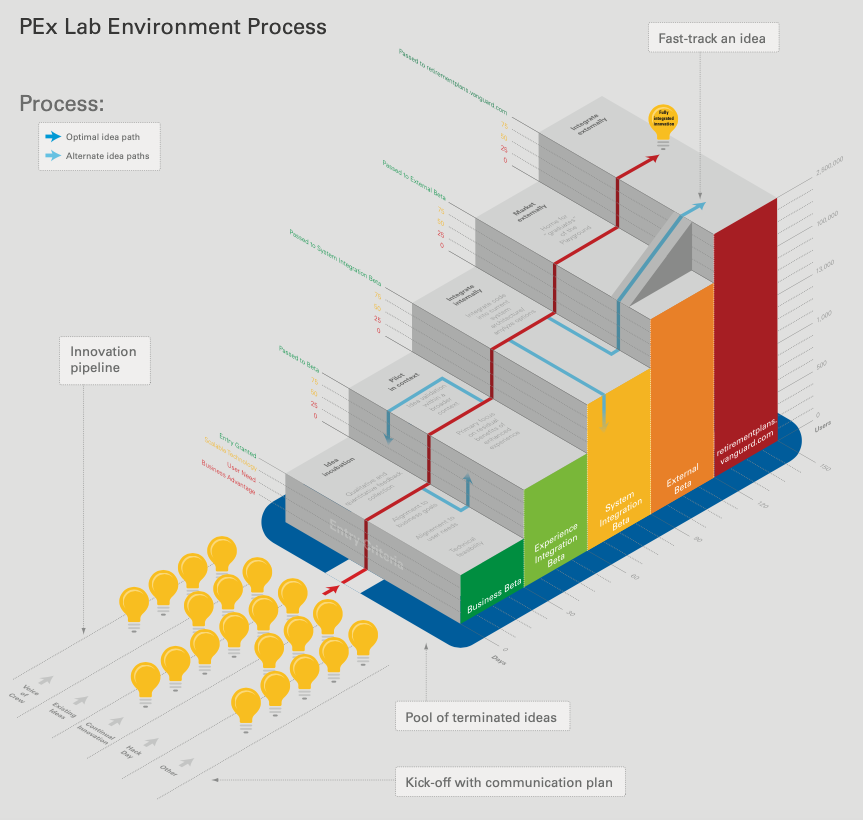Process
The Design Process
In the fast-paced and often complex world of product design, the value of a clearly articulated and commonly understood design process cannot be overstated. Such a process does more than just streamline workflows; it serves as the bedrock for innovation, strategic alignment, and the delivery of human-centered, world-class products. At the heart of this process is the collective understanding of the problem we aim to solve—a principle so crucial that Albert Einstein famously remarked, "If I had an hour to figure out the most important question in the universe, I would spend the first 55 minutes making sure I understood the question." This wisdom underscores the importance of defining and aligning on the problem before diving into solutions, ensuring that every effort is directed toward a meaningful and impactful outcome.
The design process embodies the mantra, "People don't plan to fail, they fail to plan." Collective planning is vital, not as a bureaucratic exercise, but as a strategic tool that aligns team efforts, sets clear objectives, and anticipates challenges. It is through this planning phase that a team can move cohesively towards a shared vision, leveraging each member's unique skills and insights to navigate the project's complexities.
Understanding the current state of the user experience from multiple perspectives is foundational. It ensures that the design solutions we develop are not just innovative but are rooted in the real needs and challenges of our users. This deep dive into the user experience at the outset informs each subsequent phase of the design process, from ideation to prototyping to testing and iteration, ensuring that every decision is made with the end-user in mind.
Each phase of the design process contributes uniquely to the development of human-centered products. Ideation expands the realm of possibilities, prototyping brings ideas to tangible forms for testing, and iterative design refines these solutions based on real user feedback, creating products that resonate deeply with users' needs and expectations. A common understanding of this process across the organization facilitates seamless integration with other critical processes, such as the Software Development Life Cycle (SDLC), allowing for agility and efficiency in product development.
Lean Design principles, when used alongside and integrated with Agile development methodologies, further enhance this synergy. This combination enables teams to remain adaptable, responsive, and focused on delivering value quickly, while continuously learning and iterating based on user feedback and business outcomes.
Ultimately, a well-defined and universally understood design process serves as a powerful catalyst for organizational success. It not only saves time and money by preventing misaligned efforts and redundant work but also ensures that the products we bring to market truly meet the needs of our users and stand out in a crowded marketplace. In doing so, we not only fulfill our commitment to excellence but also reinforce the role of design as a strategic asset within the organization.
“If I had an hour to figure out the most important question in the universe, I would spend the first 55 minutes making sure I understood the question.”
— Albert Einstein
Innovation
Innovation, often misconstrued as a sporadic burst of creativity or a serendipitous discovery, is fundamentally a process. It thrives not on random chance but on a structured approach that fosters continuous exploration, experimentation, and execution. For innovation to truly flourish, it must be embedded in the culture of an organization, woven into the very fabric of its operations, mindset, and identity.
Embedding innovation into the organizational culture means creating an environment where questioning the status quo is encouraged, where every employee feels empowered to suggest ideas, and where failure is seen not as a setback but as a step forward in the learning process. It's about fostering a culture that values curiosity, resilience, and the pursuit of excellence. This environment nurtures innovation by allowing it to become a natural outcome of daily work, rather than a forced initiative that occurs in isolated bursts.
For innovation to be woven into the fabric of an organization, it requires deliberate strategies and practices:
-
Leaders must champion innovation, not just in words but through actions. This includes allocating resources for innovation projects, recognizing and rewarding innovative ideas, and leading by example.
-
Innovation thrives at the intersection of diverse perspectives. Encouraging cross-functional teams to work on innovation projects can uncover unique insights and solutions that would not emerge within siloed departments.
-
An innovative culture is a learning culture. Providing opportunities for employees to gain new knowledge and skills, whether through formal training or informal learning experiences, fuels the ideation process.
-
A culture of openness, where information flows freely and all voices are heard, is critical for innovation. It ensures that ideas can be shared, refined, and implemented without unnecessary barriers.description
-
Embracing a mindset that tolerates risk and views failure as a valuable source of insight is essential. This mindset encourages experimentation and mitigates the fear of failure that can stifle innovative thinking.
-
Innovation is an iterative process of testing, learning, and refining. Adopting methodologies such as design thinking or agile development can institutionalize this iterative approach, making innovation more systematic and repeatable.
By embedding innovation into the cultural and operational DNA of an organization, it becomes more than just an aspiration; it becomes a way of being. This integration ensures that innovation is not seen as the responsibility of a select few but as a collective endeavor where everyone plays a part. In such an environment, innovation can flourish, driving not only the development of new products and services but also fostering a dynamic, resilient, and forward-thinking organization.
Process &
Story Telling
The art of storytelling is an invaluable tool in evangelizing the use of a commonly understood design process within an organization. Stories have the power to captivate, engage, and inspire action, making them an essential strategy for leaders aiming to foster a culture that embraces a unified approach to design. Storytelling transcends the mere presentation of facts or procedures; it weaves a narrative that connects emotionally with its audience, illuminating the design process's value in a compelling and memorable way.
Emotional Connection: Stories create an emotional bond with the audience, making the design process relatable and its importance visceral. By sharing real-world examples of how the design process has led to successful outcomes, or even candidly discussing moments of failure that provided critical learning opportunities, leaders can humanize the process. This emotional engagement fosters a deeper understanding and appreciation for the design process, encouraging buy-in and participation.
Simplification of Complex Ideas: A commonly understood design process often involves intricate steps, methodologies, and terminologies that can be overwhelming. Storytelling simplifies these concepts, breaking them down into digestible, engaging narratives that highlight their practical application and benefits. This approach demystifies the design process, making it accessible to all members of the organization, regardless of their familiarity with design principles.
Illustration of Impact: Through storytelling, leaders can vividly illustrate the tangible impact of adopting a unified design process. Stories of how the process has led to innovative solutions, improved user experiences, and driven business success serve as powerful testimonials. These stories not only showcase the process's effectiveness but also serve as inspirational examples that others in the organization can aspire to replicate.
Encouraging a Shared Vision: Storytelling fosters a sense of shared purpose and vision. When leaders share stories that emphasize collaboration, cross-functional teamwork, and the collective achievements made possible through the design process, it reinforces the idea that everyone plays a critical role in the organization's design culture. This shared vision encourages a collaborative ethos, where the design process is embraced as a common language and practice.
Catalyst for Cultural Change: Ultimately, storytelling can be a catalyst for cultural transformation within an organization. By consistently sharing stories that highlight the value of a commonly understood design process, leaders can gradually shift perceptions, attitudes, and behaviors. This narrative-driven approach embeds the design process into the organizational culture, making it an integral part of how the organization operates and innovates.
In conclusion, storytelling is not just a method of communication; it is a strategic tool for leaders aiming to evangelize the use of a commonly understood design process. Through the power of narrative, leaders can engage their audience, simplify complex ideas, illustrate the process's impact, encourage a shared vision, and drive cultural change, thereby establishing a robust foundation for innovation and design excellence across the organization.
